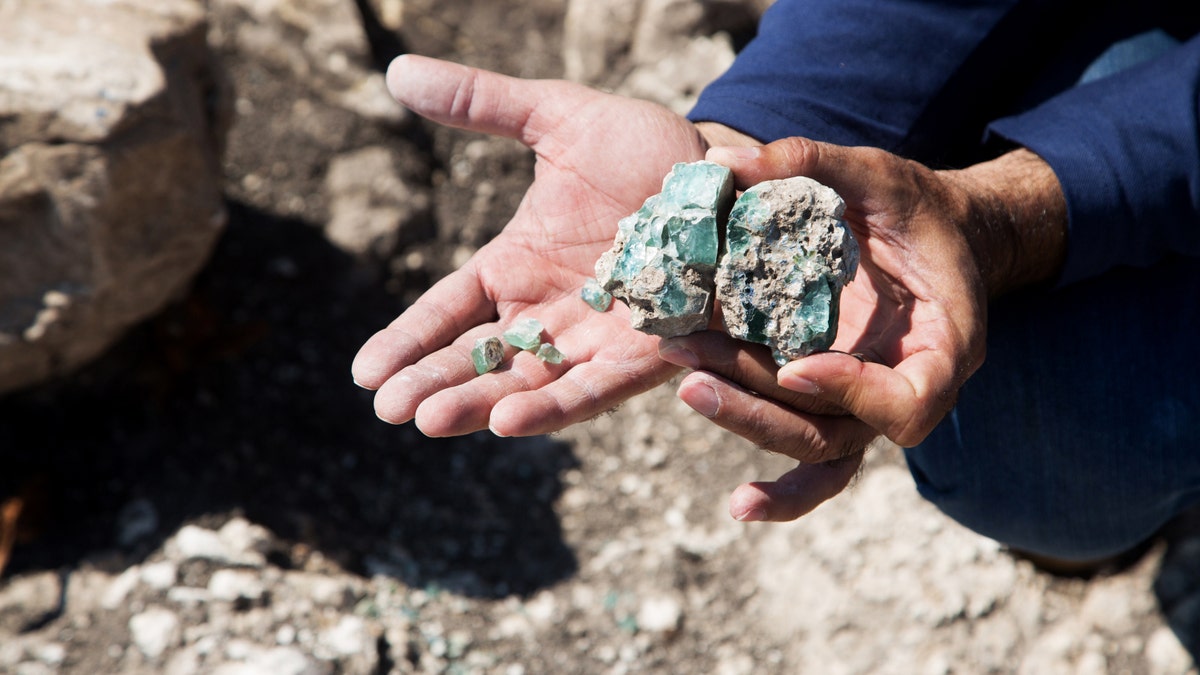
Small fragments of the raw glass as they were found at the site.(Photo: Assaf Peretz, courtesy of Israel Antiquities Authority)
Archaeologists who uncovered some of the oldest glass kilns in the world at the foot of Mount Carmel in Israel say they’re the “missing link” in the production of Judean glass, which was widely used in the Roman Empire during the fifth century.
The kilns were found last summer when an Israel Antiquities Authority inspector overseeing work on a railway being built from Haifa to the east observed chunks of glass, a floor and a layer of ash inside a trench. Construction was halted to prepare for an archaeological excavation, which uncovered the kilns.
Related: Curse tablets discovered in 2,400-year-old grave
The kilns had two compartments: a firebox for burning kindling to achieve a temperature of about 2,200 degrees Fahrenheit, and a chamber in which clean beach sand and salt were melted together for up to two weeks, until enormous chunks of raw glass -- some weighing more than 10 tons -- were produced. Once the kilns cooled, the glass chunks were broken into smaller pieces and sold to workshops, where they were melted again to produce glassware.
The final product was the light green Judean glass that was widely used in the Roman Empire, but whose exact origin was unknown prior to the find.
Related: 42 tombs and a shrine discovered in Egypt
"This is a sensational discovery, and it is of great significance for understanding the entire system of the glass trade in antiquity,” said Ian Freestone, a University College London professor who specializes in identifying the chemical composition of glass. “This is evidence that Israel constituted a production center on an international scale; hence its glassware was widely distributed throughout the Mediterranean and Europe.”
The discovery of the kilns has “implications regarding the history of the glass industry both in Israel and in the entire ancient world,” said Yael Gorin-Rosen, head curator of the Israel Antiquities Authority Glass Department. “We know from historical sources dating to the Roman period that the Valley of Acco was renowned for the excellent quality sand located there, which was highly suitable for the manufacture of glass. Chemical analyses conducted on glass vessels from this period, which were discovered until now at sites in Europe and in shipwrecks in the Mediterranean basin, have shown that the source of the glass is from our region.
Related: Christian saint's bones unearthed in monastery destroyed by ISIS
“Now, for the first time, the kilns have been found where the raw material was manufactured that was used to produce this glassware.”
The kilns are being removed from their original location and will be put on public display in a few months at a regional high school.
